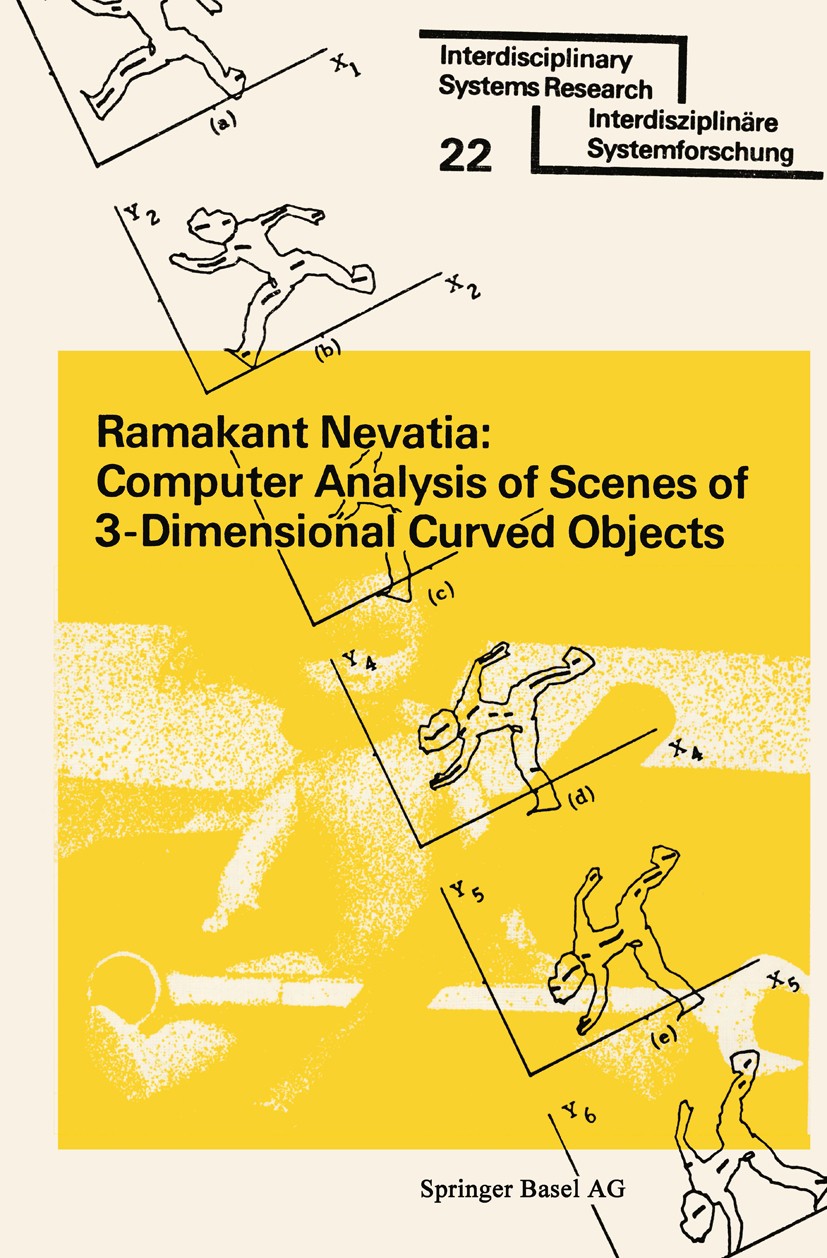| 书目名称 | Computer Analysis of Scenes of 3-Dimensional Curved Objects | | 编辑 | Ramakant Nevatia | | 视频video | http://file.papertrans.cn/234/233455/233455.mp4 | | 丛书名称 | Interdisciplinary Systems Research | | 图书封面 |  | | 描述 | 1.0 2 The attention then turned to the problem of "Body separation", i.e. separation of occluding bodies in a scene (See [Guzman), [Falk), and [Waltz)). Grape ([Grape)) combined the separation of bodies with recognition, by removing parts of the scene recognized as belonging to a known body. All of these techniques were designed to work with polyhedral objects only, and extensively use the properties of edges and vertices. Though some impressive results have been reported ([Waltz], [Grape)), and perhaps some useful abstractions can be made, the specific techniques used fail to generalize to a wider class of objects. Among previous work on curved objects, B.K.P. Horn ([Horn)) presented techniques for extracting three dimensional depth data from a TV image, using reflection characteristics of the surface. Krakauer ([Krakauer]) represented objects by connections of brightness contours. Ambler et al ([Ambler)) describe experiments with simple shapes, including curved objects, using relations within a two-dimensional image. However, none of these efforts really addresses the problem of "shape" representation and description. Work on outdoor scene analysis is also concerned with non-poly | | 出版日期 | Book 1976 | | 关键词 | Abstraction; boundary element method; character; class; cognition; computer; design; Impress; object; present | | 版次 | 1 | | doi | https://doi.org/10.1007/978-3-0348-5206-7 | | isbn_softcover | 978-3-7643-0845-2 | | isbn_ebook | 978-3-0348-5206-7 | | copyright | Springer Basel AG 1976 |
The information of publication is updating

|
|
 |Archiver|手机版|小黑屋|
派博传思国际
( 京公网安备110108008328)
GMT+8, 2025-11-15 11:28
|Archiver|手机版|小黑屋|
派博传思国际
( 京公网安备110108008328)
GMT+8, 2025-11-15 11:28


